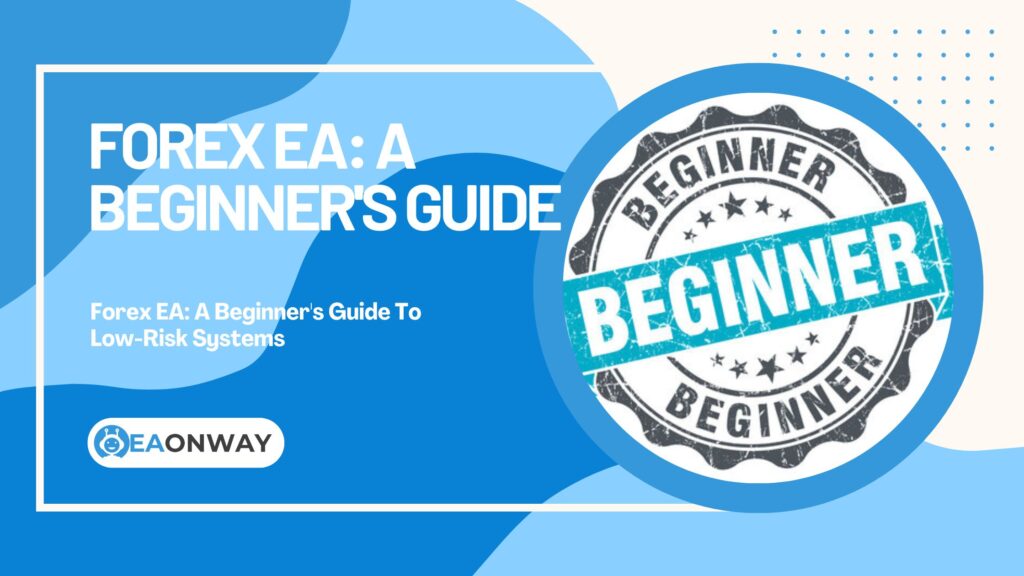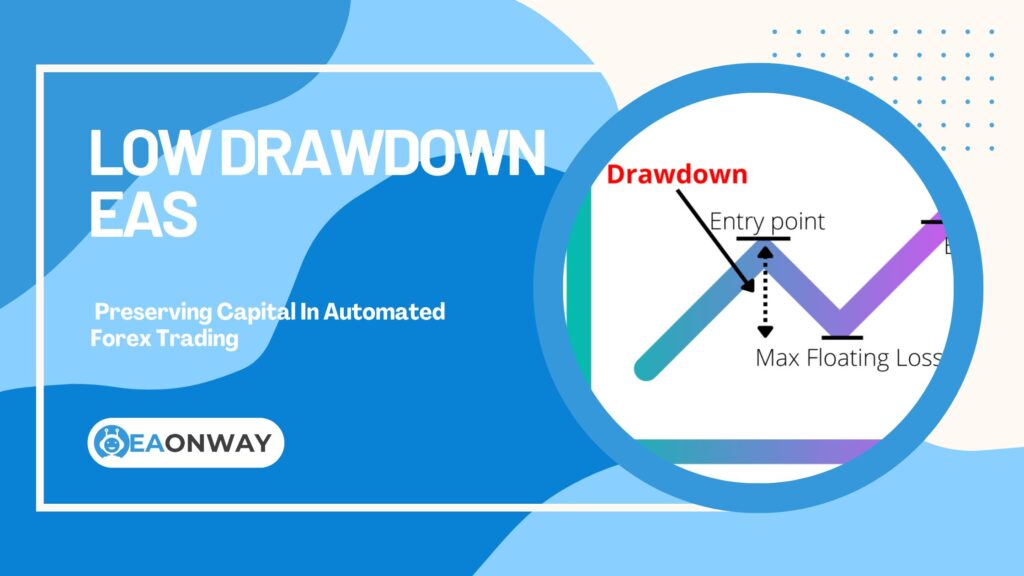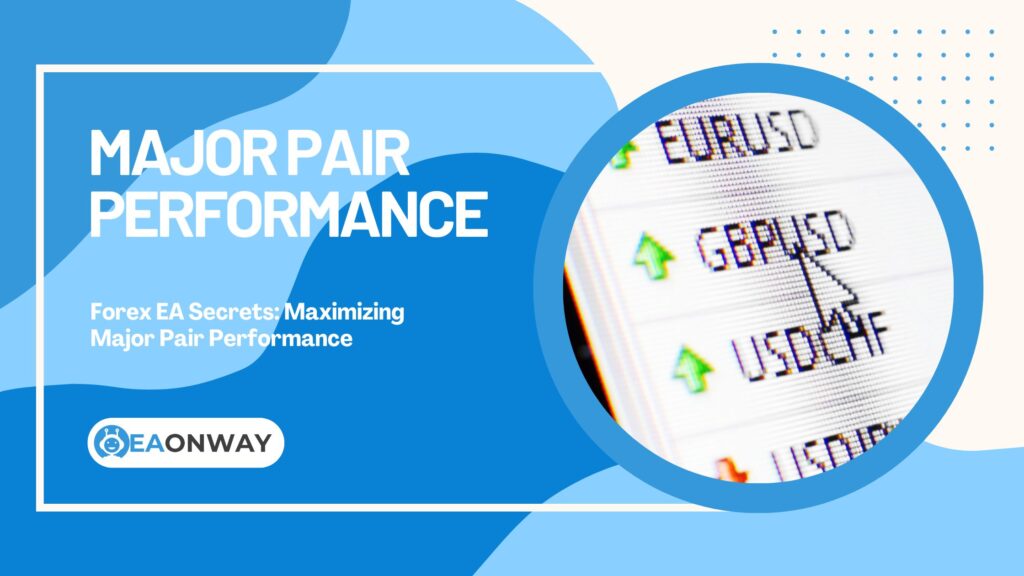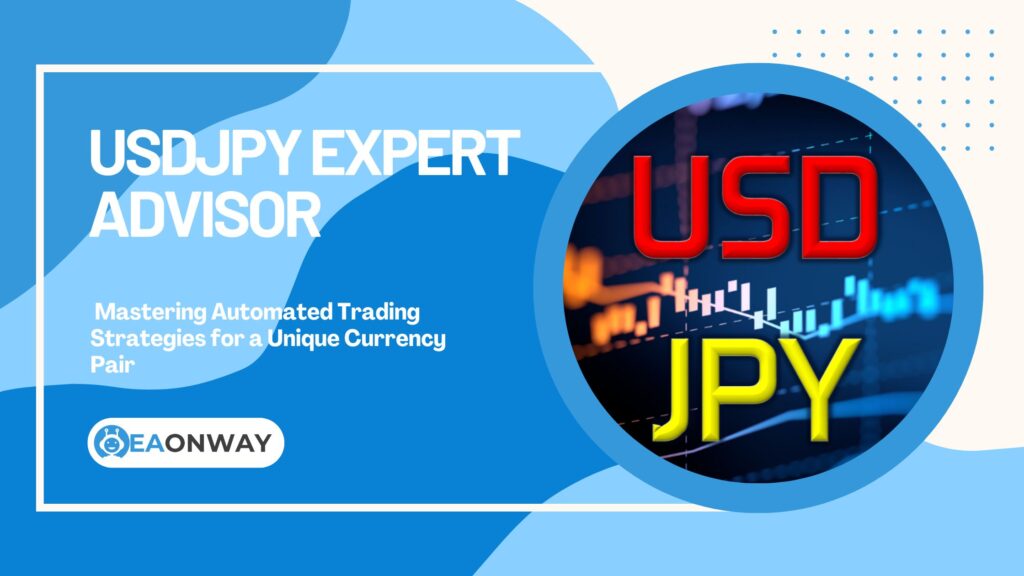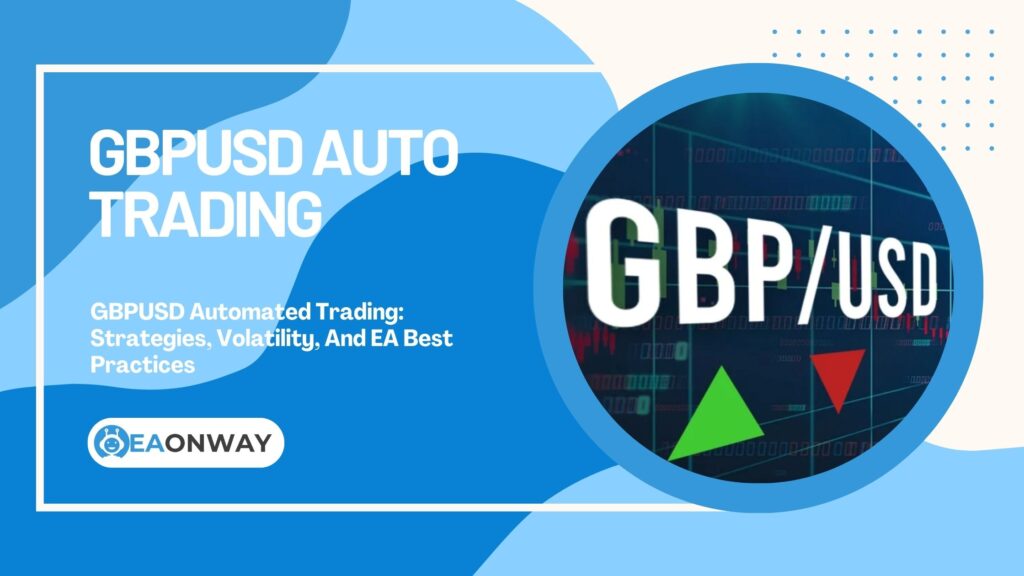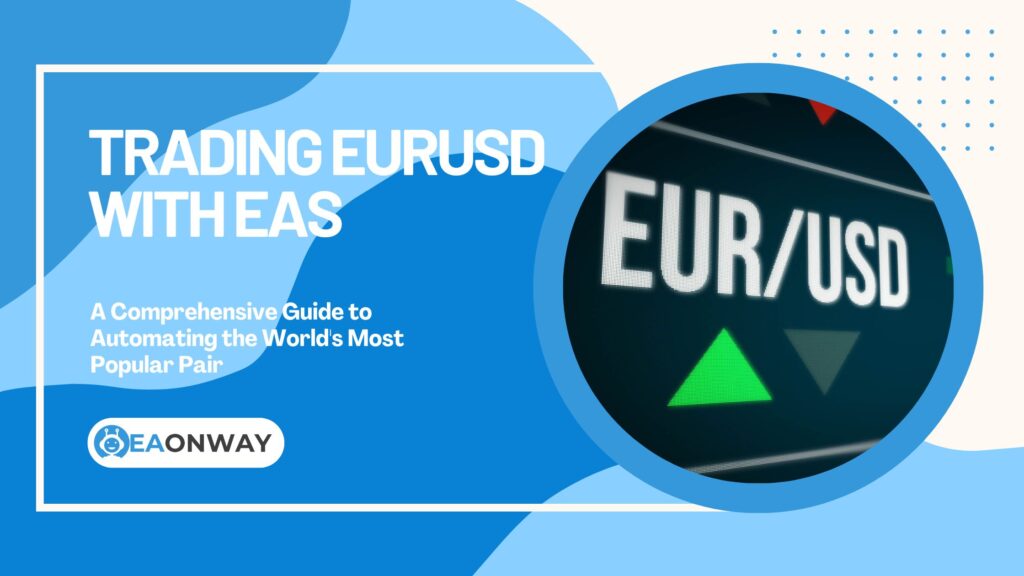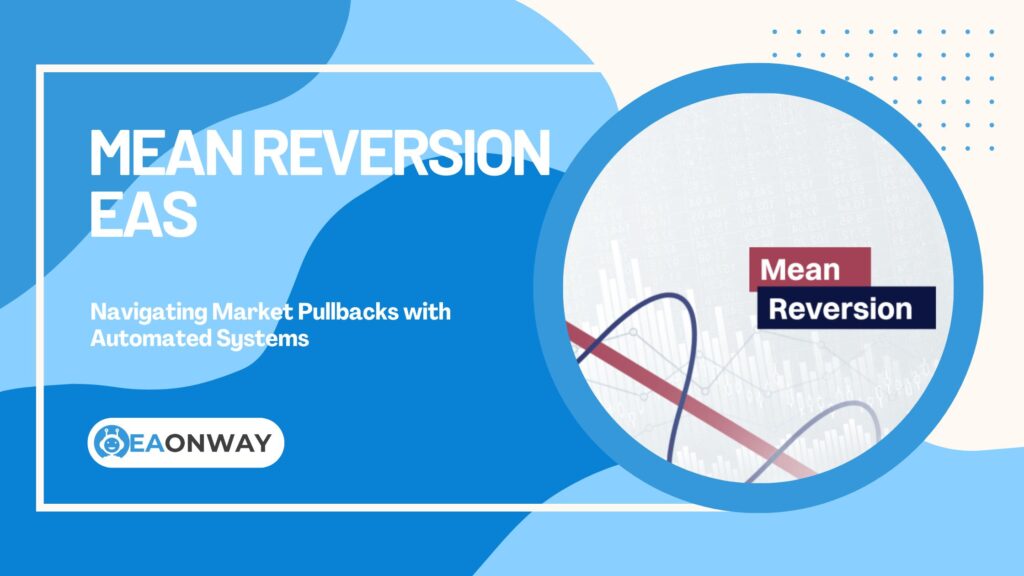Common EA Trading Strategies
Prop Firm Challenges: Using EAs For Success Guide
Prop Firm Challenges: Using EAs For Success Guide
Are you exploring Prop Firm Challenges and wondering if an Expert Advisor (EA) could be your key to navigating these demanding evaluations and securing a funded trading account? Many aspiring traders, particularly those with busy schedules or seeking to mitigate emotional trading, look towards automated trading systems. These Proprietary Trading Firm evaluations offer a significant opportunity: the chance to trade substantial capital without risking your own. However, the path is paved with strict rules and potential pitfalls, especially when incorporating Forex EA for Prop Firms. This article delves into the intricacies of using EAs in prop firm challenges, from understanding the landscape and selecting the right automated trading systems, to crucial setup steps and, importantly, recognizing the inherent risks and avoiding false expectations of easy profits with a funded trader program. We aim to equip you with the knowledge to make informed decisions, focusing on risk management and realistic outcomes in your journey towards potentially becoming a funded trader.
Quick Guide: Prop Firm EAs At-A-Glance
Here’s a brief overview of what you need to know when considering Expert Advisors for proprietary trading firm evaluations:
- Understand Prop Firms: They offer capital to traders who pass rigorous evaluation challenges.
- Know Your EA: Expert Advisors automate trading but vary wildly in strategy and effectiveness. Not all are suitable or allowed.
- Strict Rules Apply: Prop firms have specific rules regarding EA usage, often restricting high-risk strategies like martingale or high-frequency trading.
- Selection is Key: Choose EAs with transparent logic, robust risk management features, and a proven (backtested and forward-tested) track record.
- Proper Setup: Correct MT4/MT5 configuration and a reliable Trading VPS are vital for EA performance.
- Risk Management is Paramount: Adhering to drawdown limits (daily and maximum) is crucial; your EA must be configured to respect these.
- No Guarantees: EAs do not guarantee a pass or profits. Over-reliance can be detrimental.
- Education First: Thoroughly understand both the prop firm’s rules and your EA’s mechanics before starting.
Understanding Proprietary Trading Firms and Their Challenges
The allure of trading larger capital without risking personal funds is a significant draw for many. Proprietary trading firms, or prop firms, offer this gateway, but it comes with specific hurdles known as challenges or evaluations.
What Exactly Is a Proprietary Trading Firm (Prop Firm)?
A proprietary trading firm is a company that provides traders with access to its capital to trade various financial markets, such as Forex, stocks, or commodities. In return for successfully managing this capital and generating profits, the trader receives a share of those profits, often a substantial percentage. To qualify, traders typically need to pass one or more evaluation stages, commonly known as prop firm challenges or a funded trader program. These challenges are designed to test a trader’s skill, discipline, and risk management capabilities before live funds are allocated.
Prop firms effectively look for consistent traders who can manage risk according to the firm’s guidelines. They are not brokers; instead, they are talent scouts seeking profitable trading strategies that can be scaled. The rise of online prop firms has made these opportunities more accessible globally, attracting individuals from IT professionals to experienced entrepreneurs seeking to leverage their trading acumen.
How Do Prop Firm Challenges Typically Work?
Prop firm challenges usually involve a multi-stage evaluation process where traders must meet specific profit targets within a set timeframe while adhering to strict risk parameters, such as maximum daily loss and overall maximum drawdown.
A typical structure might include:
- Phase 1 (Challenge): Traders aim for a profit target (e.g., 8-10%) within a defined period (e.g., 30 days), without exceeding daily loss limits (e.g., 5%) or maximum total drawdown (e.g., 10-12%). There’s often a minimum number of trading days required.
- Phase 2 (Verification): If Phase 1 is successful, traders often move to a verification stage. This phase usually has similar rules but might have a lower profit target (e.g., 5%) and potentially a longer timeframe (e.g., 60 days) to confirm consistency.
- Funded Account: Upon successfully completing all evaluation phases, the trader is offered a funded account. They then trade the firm’s capital and share profits according to a pre-agreed split (e.g., 70-90% to the trader).
It’s crucial to understand that these challenges are designed to be difficult. According to a 2025 study by MyFundedFutures, approximately 72% of traders fail to pass the initial evaluation stage of prop firm challenges, with inadequate risk management cited as the primary reason in 65% of cases (Source: MyFundedFutures Trader Success Analysis, 2025).
What Are Common Prop Firm Evaluation Criteria?
Prop firm evaluation criteria are the specific rules and targets you must meet to pass their challenges. These generally include:
- Profit Target: The percentage of profit you need to achieve on the evaluation account.
- Maximum Overall Drawdown: The maximum your account equity or balance can decrease from its initial or highest point. This is often a fixed percentage (e.g., 10-12%).
- Maximum Daily Drawdown: The maximum loss your account can incur in a single trading day, usually calculated from the previous day’s balance or equity. This is typically around 5%.
- Minimum Trading Days: Some firms require you to actively trade for a certain number of days, even if you hit the profit target early.
- Consistency Rules: Some firms have rules to prevent traders from passing by making one lucky, oversized trade. They look for consistent profitability over several trades.
- Prohibited Strategies: Certain trading styles, especially those deemed overly risky or manipulative (like some types of arbitrage or high-frequency trading without approval), may be banned. Using an unapproved Forex EA for Prop Firms can lead to disqualification.
Understanding and respecting these prop firm trading rules is non-negotiable for anyone aiming to pass an evaluation, especially when employing automated trading systems.
The Role of Expert Advisors (EAs) in Trading
Expert Advisors, or EAs, are a popular tool in the Forex market, promising automation and emotionless trading. But how do they fit into the demanding world of prop firm challenges?
What Are Trading Expert Advisors (EAs)?
Trading Expert Advisors (EAs) are software programs that automate trading decisions based on pre-programmed rules and algorithms. They run on trading platforms like MetaTrader 4 (MT4) or MetaTrader 5 (MT5), analyzing market conditions and executing trades—opening, managing, and closing positions—without manual intervention. An MT4 Expert Advisor or MT5 Expert Advisor can operate 24/7, tirelessly scanning for opportunities according to its underlying strategy.
EAs can be based on various technical indicators, price action patterns, or complex mathematical models. The idea is to remove human emotion and fatigue from trading, allowing for disciplined execution of a strategy. However, their effectiveness is entirely dependent on the quality of their programming, the strategy they employ, and the market conditions they are designed for.
Why Consider an EA for Prop Firm Challenges?
Many traders consider using an EA for prop firm challenges because these automated systems can tirelessly execute a predefined strategy 24/5, potentially identifying and acting on trading opportunities even when the trader is asleep or at work. This is particularly appealing to the target audience of busy professionals. EAs can also enforce discipline by strictly adhering to programmed entry, exit, and risk management rules, helping to avoid emotional trading decisions common under the pressure of evaluation.
However, while EAs offer benefits like:
- Automation: Trading around the clock.
- Discipline: Sticking to the strategy without emotional interference.
- Speed: Reacting to market changes faster than a human.
- Backtesting: The ability to test the strategy on historical data.
It’s vital to recognize potential downsides:
- Not a “Set and Forget” Solution: EAs require monitoring and occasional adjustments.
- Market Condition Dependency: An EA that performs well in one market condition may fail in another.
- Over-Optimization Risk: EAs can be curve-fitted to historical data, performing poorly in live trading.
- Technical Issues: VPS failures, internet outages, or platform glitches can disrupt EA operation.
- Prop Firm Restrictions: Not all EAs or EA behaviors are permitted by prop firms.
The goal isn’t just passing prop firm evaluation with EA; it’s about finding a sustainable approach.
Navigating Prop Firm Rules for EA Usage
While EAs can be powerful tools, prop firms have specific regulations concerning their use to manage their own risk. Ignoring these can lead to a swift disqualification.
Are EAs Allowed in Prop Firm Challenges?
Generally, yes, most proprietary trading firms allow the use of Expert Advisors in their challenges and funded accounts, but almost always with specific conditions and restrictions. Firms recognize that algorithmic trading for prop firms is a legitimate approach. However, they need to ensure that the strategies employed are sound, manageable from a risk perspective, and not exploitative of their systems or liquidity providers. Always verify the specific EA rules of any prop firm before starting a challenge. Some may require you to disclose that you are using an EA.
What Common Prop Firm Rules Apply to EA Trading?
Prop firms often have explicit rules regarding EA usage to prevent system abuse and ensure fair play. Common restrictions include:
- High-Frequency Trading (HFT) EAs: Many firms prohibit EAs that execute an excessive number of trades in very short periods, or those relying on latency arbitrage.
- Martingale or High-Risk Grid EAs: Strategies that significantly increase lot sizes after losses (martingale) or open numerous offsetting positions without clear stop losses (some grid types) are often banned due to their potential for catastrophic drawdowns.
- Copy Trading EAs: Using an EA that copies trades from an external signal provider or another account may be restricted. Firms want to see your (or your chosen EA’s unique) trading edge.
- Identical Strategies: If multiple users employ the exact same EA with identical settings, firms might cap the total capital allocated to that single strategy. This is why some prop firm approved EAs lists might exist informally, but firms usually focus on the behavior of the EA.
- IP Address and Account Management: Using the same EA from the same IP address across multiple challenge accounts (especially if attempting to pass for others) is usually forbidden.
- News Trading EAs: Some firms restrict trading high-impact news events with EAs, or have specific spread/slippage rules during these times.
- Specific Prohibited EAs: Some firms may maintain a list of known EAs that are not allowed.
Failure to comply with prop firm trading rules for EAs is a common reason for challenge failure. The “Terms and Conditions” of any prop firm are essential reading. For instance, ESMA (European Securities and Markets Authority) has highlighted concerns about high-risk speculative products for retail clients, and while prop firms operate differently, the underlying risk management principles are vital (Source: ESMA Statements on CFDs).
Why Do Prop Firms Have Specific Rules for EAs?
Proprietary trading firms implement specific rules for EA usage primarily to manage their own capital risk and ensure the sustainability of their business model. They need to prevent strategies that could exploit their brokerage conditions, overwhelm their execution infrastructure, or expose them to unacceptable levels of drawdown. Furthermore, by setting boundaries, they aim to identify traders (or trading systems) that demonstrate genuine, consistent skill rather than those relying on short-lived loopholes or overly aggressive tactics that are not viable in the long run. These rules also help maintain a fair trading environment for all participants in their funded trader program.
Choosing the Right EA for Your Prop Firm Journey
Selecting an appropriate Expert Advisor is arguably the most critical step if you decide to use one for a prop firm challenge. Not all EAs are created equal, especially when facing stringent evaluation criteria.
How Do You Select a Suitable EA for a Prop Firm Challenge?
To select a suitable EA for a prop firm challenge, you should prioritize EAs with transparent trading logic, robust built-in risk management features (like adjustable stop-loss, take-profit, and maximum risk per trade), and a demonstrable history of stable performance that aligns with prop firm drawdown rules. Extensive backtesting and forward testing on a demo account mirroring prop firm conditions are essential before committing to a challenge.
Consider these factors:
- Strategy Type: Understand the EA’s underlying trading strategy. Is it trend-following, mean-reverting, range-bound, or something else? Does this strategy historically perform well within typical prop firm risk limits (e.g., avoiding strategies prone to large, infrequent losses)?
- Risk Management Features: The EA must have customizable risk settings. Can you define risk per trade as a percentage of account balance? Does it have hard stop-loss mechanisms? Can it manage overall drawdown?
- Transparency: Avoid “black box” EAs where the logic is completely hidden. While full code access isn’t always available, reputable vendors provide detailed explanations of the strategy.
- Vendor Reputation and Support: Look for established vendors with positive, verifiable reviews and responsive customer support.
- Backtesting Results: Analyze long-term backtests (5+ years if possible) across various market conditions. Pay attention to maximum drawdown, profit factor, and win rate. Be wary of perfect, linear equity curves as they often indicate over-optimization.
- No Risky Methods: Ensure the EA does not use prohibited methods like martingale, grids without stop losses, or HFT strategies that might be flagged by the best prop trading firms.
Key Features to Look for in a Prop Firm-Compatible EA
When searching for an EA specifically for passing prop firm evaluation with EA, look for these crucial features:
- Adjustable Risk Management:
- Per-trade stop-loss.
- Overall account equity stop (drawdown protection).
- Ability to set risk as a percentage of balance or a fixed lot size.
- Non-Intrusive Strategies: Strategies that aim for steady gains rather than quick, risky profits are generally more compatible with maximum drawdown prop firm rules.
- Low Drawdown History: Prioritize EAs that have historically demonstrated low drawdowns in backtests and, ideally, live trading.
- Customizable Trading Hours: Some strategies perform better during specific market sessions.
- News Filter: An option to pause trading during high-impact news events can be beneficial.
- Compatibility with Prop Firm Rules: Ensure it doesn’t inherently use techniques banned by your chosen firm (e.g., certain types of grid trading, martingale).
- MT4/MT5 Compatibility: Must work on the platform offered by the prop firm.
Red Flags: EAs to Avoid for Prop Firm Evaluations
Steer clear of EAs exhibiting these warning signs, as they are unlikely to help you pass prop firm challenges and may even lead to quick failure:
- Promises of Unrealistic Profits: EAs guaranteeing high returns with little risk are almost always scams.
- Curve-Fitted Backtests: Equity curves that look too good to be true, often with no losing periods, likely mean the EA was over-optimized for past data and will fail in live conditions.
- No Stop-Loss Usage: EAs that trade without stop losses or use very wide stops are a recipe for disaster, especially with prop firm drawdown limits.
- Martingale, Aggressive Grid, or Averaging Strategies: These can work for a while but eventually lead to catastrophic losses that will violate drawdown rules.
- Lack of Transparency: If the vendor cannot clearly explain the EA’s strategy or risk management, be very cautious.
- No Independent Reviews or Track Record: Relying solely on vendor claims without third-party verification (e.g., Myfxbook, FXBlue) is risky.
- High Cost with No Trial/Demo: Be wary of very expensive EAs that offer no way to test them beforehand.
Importance of Thorough EA Backtesting and Forward Testing
Thorough EA backtesting strategies and forward testing are non-negotiable before using an EA in a live prop firm challenge. Backtesting involves running the EA on historical price data to see how it would have performed in the past. This helps identify potential flaws and assess historical drawdown and profitability. Aim for at least 99.9% modelling quality in MT4 backtests.
Forward testing (or demo trading) involves running the EA on a live demo account for a significant period (weeks or months). This tests the EA in current market conditions, which can differ greatly from historical data, and helps confirm if its performance aligns with backtest expectations. This step is crucial for EA optimization techniques without risking real challenge fees.
Setting Up Your EA for a Prop Firm Account
Once you’ve chosen a potentially suitable EA, correct setup is vital for its performance and compliance within the prop firm challenges environment.
How Do You Install and Configure an EA on MT4/MT5 for a Prop Firm?
To install and configure an EA on MT4/MT5 for a prop firm, you first download the EA files (usually .ex4 or .ex5 and potentially .set files). Then, in your MetaTrader platform, go to ‘File’ > ‘Open Data Folder’. Place the .ex4/.ex5 file into the ‘MQL4/Experts’ or ‘MQL5/Experts’ folder. If there are .set files (presets), place them in the ‘MQL4/Presets’ or ‘MQL5/Presets’ folder. Restart MetaTrader, drag the EA onto the desired chart, and carefully configure its input parameters according to your strategy and the prop firm’s rules, especially risk settings.
Key configuration steps:
- Open Data Folder: In MT4/MT5, click
File->Open Data Folder. - Place EA File: Navigate to
MQL4/Experts(for MT4) orMQL5/Experts(for MT5) and copy your EA file (e.g.,MyEA.ex4orMyEA.ex5) into this folder. - Place Preset/Set Files (if any): If your EA came with
.setfiles (recommended settings), place them in theMQL4/PresetsorMQL5/Presetsfolder. - Refresh/Restart: In the MetaTrader Navigator window, right-click on ‘Expert Advisors’ and click ‘Refresh’, or simply restart MetaTrader.
- Attach to Chart: Drag the EA from the Navigator onto the currency pair chart and timeframe it’s designed for.
- Configure Inputs: The EA’s input parameter window will pop up.
- Load Settings: If you have a
.setfile, click ‘Load’ and select it. - Common Tab: Ensure ‘Allow live trading’ and ‘Allow DLL imports’ (if required by the EA) are checked. Critically, ensure “Allow Automated Trading” is enabled on the main platform toolbar.
- Inputs Tab: This is where you set lot sizing, risk per trade, stop-loss, take-profit, magic numbers, and any strategy-specific parameters. This is crucial for prop firm compliance. Pay extreme attention to risk settings to align with the maximum drawdown prop firm rules.
- Load Settings: If you have a
- Confirm: Click ‘OK’. A smiley face on the top right of the chart indicates the EA is active.
Always double-check every setting. A small mistake here can lead to rule violations.
Why is a Trading VPS Crucial for EA Performance in Challenges?
A Trading Virtual Private Server (VPS) is crucial for EA performance in prop firm challenges because it ensures your MetaTrader platform and EA run 24/7 without interruption from personal computer shutdowns, internet outages, or power failures. This continuous operation is vital for EAs that need to monitor markets and execute trades at any time, especially for traders whose strategies might span different global market sessions. Low latency to the prop firm’s trade server, often provided by a good VPS, can also improve trade execution quality.
Using a Trading VPS setup means your EA is hosted on a remote server designed for continuous operation. This minimizes the risk of missed trades or mismanagement of open positions due to technical issues on your local end.
Critical EA Settings for Prop Firm Compliance
When configuring your EA for a prop firm challenge, these settings are absolutely critical for compliance and risk management:
- Risk Per Trade: Set a fixed fractional risk (e.g., 0.5% or 1% of account balance per trade). This must be low enough to withstand a string of losses without hitting daily or maximum drawdown limits.
- Stop Loss: Every trade must have a hard stop loss. Ensure your EA implements this correctly and the stop loss level is reasonable for the strategy.
- Maximum Drawdown Control (if available): Some advanced EAs have built-in features to stop trading if a certain drawdown level is reached. This can be an extra layer of protection.
- Lot Sizing: Ensure lot sizing is calculated correctly based on your risk per trade and stop loss distance. Avoid fixed large lot sizes that don’t adapt to account balance or volatility.
- Magic Number: Use a unique magic number for your EA so its trades can be distinguished from any manual trades or other EAs.
- Slippage Control: Set a reasonable maximum slippage to avoid poor fills, especially during volatile times.
- Trading Hours/News Filter: If your EA is sensitive to news or specific sessions, configure these settings if available.
Misconfiguration of these parameters is a common pitfall. It’s wise to test these settings rigorously on a demo account that mirrors the prop firm’s leverage and account size.
Overcoming Common Hurdles: Prop Firm EA Challenges
Using an EA in a prop firm challenge isn’t a guaranteed path to a funded account. Several common difficulties can arise, derailing even promising automated trading systems.
What Are Frequent Difficulties When Using EAs in Prop Firms?
Frequent difficulties when using EAs in prop firms include struggling to adhere to strict drawdown limits (both daily and maximum), EAs performing differently in live conditions compared to backtests (often due to over-optimization or changed market dynamics), technical issues like VPS or platform connectivity problems, and inadvertently violating complex prop firm rules regarding EA behavior or trade management. Many also face the psychological challenge of trusting the EA versus intervening manually.
These common prop firm EA challenges often stem from:
- Underestimating the maximum drawdown prop firm rules.
- Poor EA selection for prop firm.
- Insufficient testing or understanding of the EA’s behavior.
- Changes in market volatility or conditions that the EA isn’t designed for.
Managing Drawdown: The Arch-Nemesis of Prop Firm Traders
Drawdown is the reduction in account equity from a previous peak. Prop firms enforce two main types:
- Maximum Daily Drawdown: Typically 4-5% of the starting daily balance or equity. If your account drops by this percentage within a 24-hour period, the challenge is often failed.
- Maximum Overall Drawdown: Typically 8-12% of the initial account balance (or sometimes a trailing drawdown from the highest equity point). Breaching this results in failure.
Your EA must be configured with risk settings that make it highly improbable to breach these limits. This means small risk per trade, effective stop losses, and a strategy that doesn’t inherently lead to large, uncontrolled losses. Understanding how your chosen EA behaves during losing streaks is vital. According to a March 2025 analysis by BrightFunded, risk management skills were identified as the single most important factor in successful prop firm evaluations, with 83% of funded traders citing strict adherence to drawdown limits as critical to their success (Source: BrightFunded Prop Firm Success Factors Study, March 2025).
The Peril of Over-Optimization and Curve Fitting
Over-optimization, or curve fitting, occurs when an EA’s parameters are excessively tuned to perform exceptionally well on historical data. While the backtest equity curve might look perfect, the EA often fails miserably in live trading because it has learned the noise of past data rather than a genuine, robust market edge.
This is a significant risk when selecting or developing an EA for prop firm evaluation.
- Signs of Over-Optimization: Extremely high win rates, perfectly smooth equity curves in backtests, and a large number of input parameters that have been fine-tuned.
- Mitigation: Use out-of-sample testing (testing on data the EA wasn’t optimized on), walk-forward optimization, and prioritize simpler EAs with fewer adjustable parameters. Robustness testing across different market conditions is also key.
Psychological Traps: Over-Reliance and Micromanagement of EAs
Even with automation, psychology plays a role.
- Over-Reliance: Believing the EA is a “money machine” and neglecting necessary monitoring or adjustments can be costly. No EA is perfect indefinitely.
- Micromanagement: Conversely, manually interfering with an EA’s trades (closing early, widening stops, adding trades) often undermines its strategy and can lead to worse results or rule violations. This is a common issue for those new to algorithmic trading for prop firms. Trusting the tested system (within reason) is important.
If an EA requires constant manual intervention to stay within prop firm rules, it’s likely not the right EA for the job.
Best Practices for Long-Term Success with EAs in Prop Firms
Passing a prop firm challenge with an EA is just the first step. The real goal is to achieve consistent profitability on a funded account and potentially scale up.
Beyond Passing: Managing a Funded Account with an EA
Once you have a funded account EA management becomes crucial. The rules (drawdown, consistency) still apply, and now real profit splits are involved.
- Maintain Discipline: Continue to let the EA trade according to its strategy. Avoid the temptation to increase risk excessively after a few wins.
- Regular Reviews: Periodically review the EA’s performance. Is it still behaving as expected? Are market conditions changing?
- Profit Withdrawal Strategy: Understand the firm’s profit withdrawal process and plan accordingly. Some firms have rules about withdrawals affecting drawdown calculations.
- Scaling Plan: If you perform well, many firms offer to increase your capital. Understand the criteria for scaling. Your EA’s risk management must be adaptable to larger account sizes.
Continuous Monitoring and Adaptation: Is Your EA Still Fit?
Markets evolve, and an EA that was profitable yesterday might not be tomorrow. Continuous monitoring is essential.
- Performance Metrics: Track key metrics like win rate, average win/loss, drawdown, and profit factor.
- Drift Detection: If performance starts to degrade significantly from historical norms, investigate why.
- Re-Optimization (Cautiously): Occasionally, EAs may need re-optimization. However, do this cautiously and test thoroughly to avoid curve fitting. Sometimes, retiring an EA and finding a new one is a better option.
- Stay Updated: Keep abreast of any changes to the prop firm’s rules or trading conditions.
Diversification and Not Putting All Your Eggs in One EA Basket
If your capital and the prop firm’s rules allow, consider diversifying across multiple EAs or strategies (provided they are distinct and don’t violate rules about identical systems).
- Reduces Strategy-Specific Risk: If one EA underperforms, another might compensate.
- Smoother Equity Curve: A portfolio of uncorrelated EAs can potentially lead to a more stable overall equity curve.
- Complexity: Managing multiple EAs requires more effort and oversight. Ensure each EA is genuinely different and that their combined risk aligns with prop firm rules.
The journey with automated trading systems in the prop firm world is one of continuous learning and adaptation.
Final Considerations for Aspiring Funded Traders
Embarking on prop firm challenges with an Expert Advisor can seem like an attractive path to securing a funded trading account. EAs offer the potential for automated, disciplined trading, which can be invaluable under the pressure of evaluation. However, this journey is far from a simple plug-and-play solution. Success hinges on a deep understanding of the prop firm’s rules, meticulous EA selection for prop firm based on robust testing and suitability, and unwavering adherence to sound risk management principles.
The allure of passing prop firm evaluation with EA should be tempered with realistic expectations. No EA guarantees success, and the risks of violating drawdown limits or other rules are ever-present. Focus on education, understand the mechanics of your chosen Forex EA for Prop Firms, and prioritize capital preservation above aggressive profit-seeking. By approaching prop firm challenges with diligence, a critical eye for EA selection, and a profound respect for risk, you can better navigate this complex landscape and increase your chances of not only passing but also achieving sustainable success as a funded trader. Remember, the EA is a tool; your knowledge and discipline in using it are what truly matter.
Important Risk Warning
The information provided in this article is for educational purposes only and should not be considered financial or investment advice. Trading Forex and CFDs, whether manually or with Expert Advisors (EAs), carries a high level of risk and may not be suitable for all investors. A significant percentage of retail investor accounts lose money when trading CFDs. The U.S. Commodity Futures Trading Commission (CFTC) warns that “Forex trading can be very risky and is not appropriate for all investors” (Source: CFTC Customer Advisory: Understand the Risks of Forex Trading). Before deciding to trade, you should carefully consider your investment objectives, level of experience, and risk appetite. There is a possibility that you could sustain a loss of some or all of your initial investment and therefore you should not invest money that you cannot afford to lose. Past performance of any trading system or methodology is not indicative of future results. EaOnWay.com does not sell EAs and is not responsible for any trading decisions you make. Always conduct your own thorough research and seek advice from an independent financial advisor if necessary.
-
Forex EA: A Beginner’s Guide To Low-Risk Systems
-
No DLL EA: Security, Portability, And Trust Benefits in Forex Trading
-
The Advantage of Forex EAs with Source Code: Unlocking Customization, Transparency, and Learning
-
Verified EA Performance: Track Records And Audits Explained
-
Low Drawdown EAs: Preserving Capital In Automated Forex Trading
-
Forex EA Secrets: Maximizing Major Pair Performance
-
Automated Index Trading: Unlocking Strategies With Expert Advisors
-
Gold Trading EAs Uncovered: Automating Your XAUUSD Strategy
-
USDJPY Expert Advisor: Mastering Automated Trading Strategies for a Unique Currency Pair
-
GBPUSD Automated Trading: Strategies, Volatility, And EA Best Practices
-
Trading EURUSD with Expert Advisors: A Comprehensive Guide to Automating the World’s Most Popular Pair
-
Mean Reversion EAs: Navigating Market Pullbacks with Automated Systems

